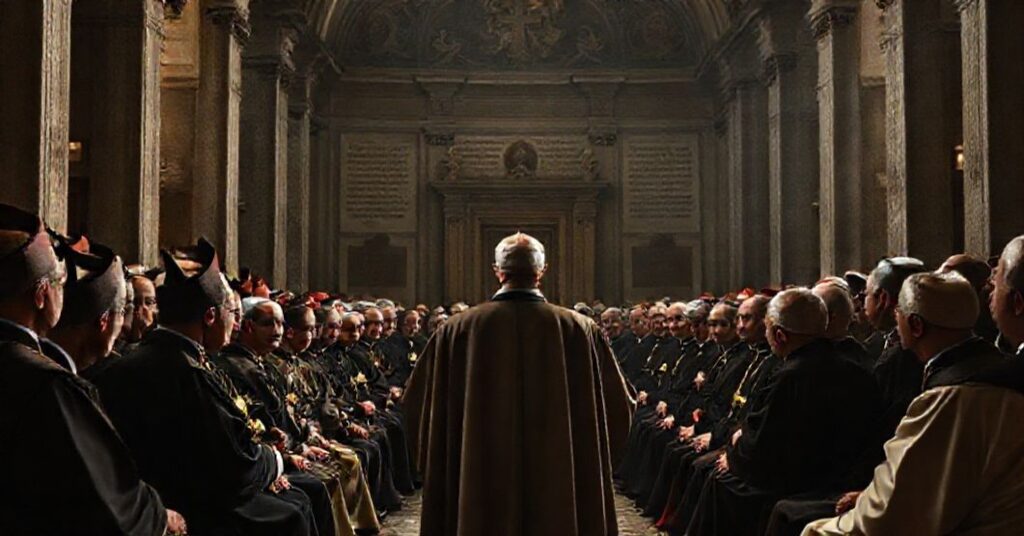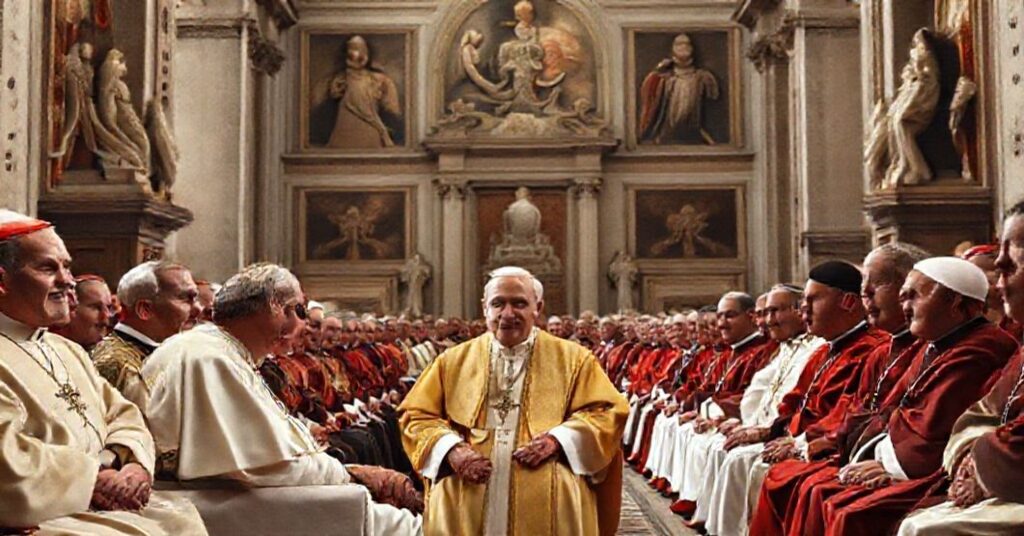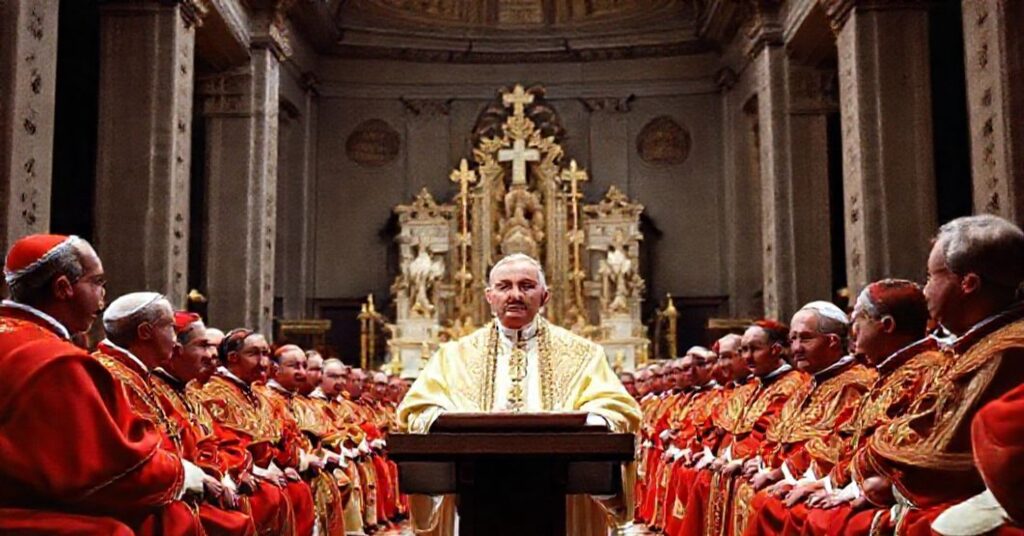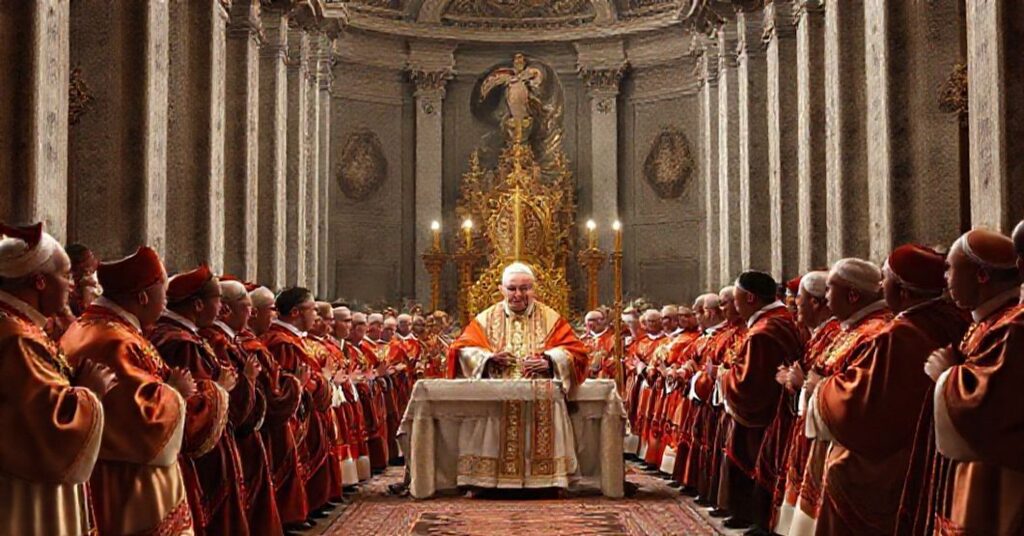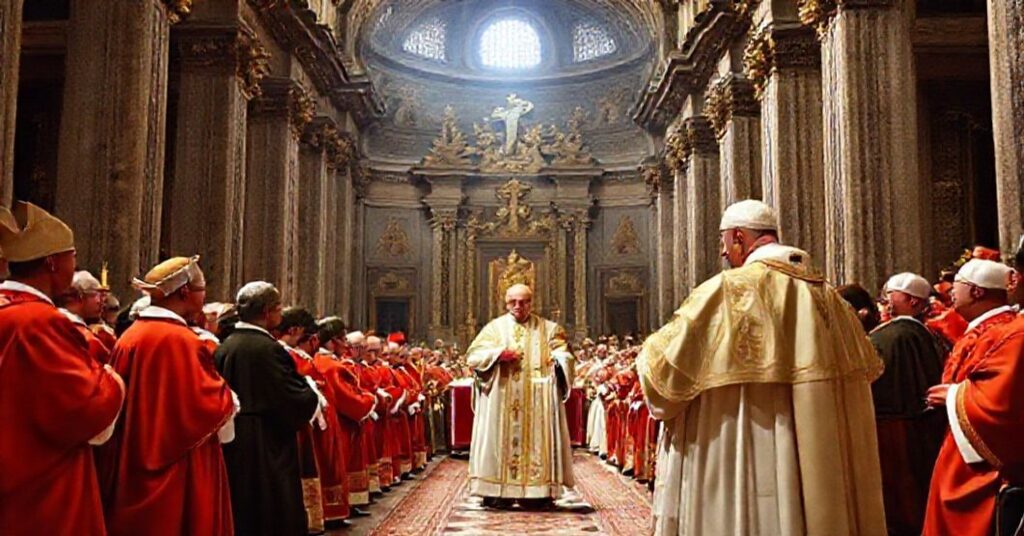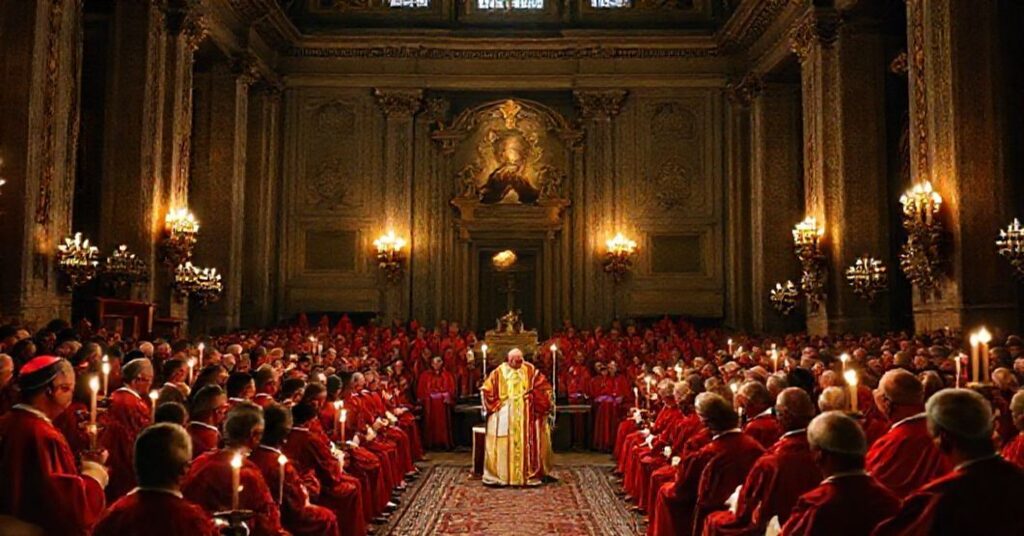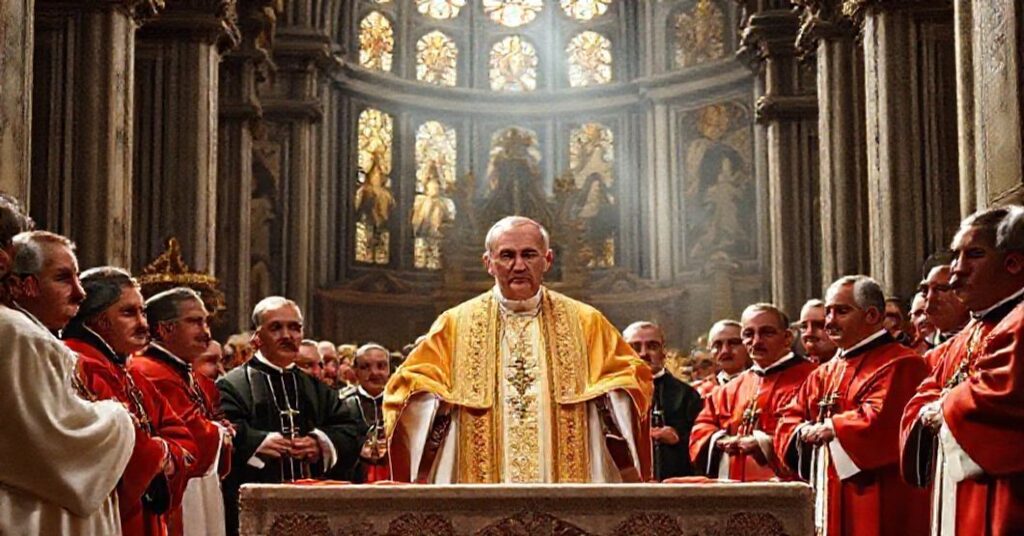Allocutio Ioannis XXIII (1961.06.20)
The allocution of John XXIII of 20 June 1961 to the members of the Central Commission for the preparation of the so-called Second Vatican Council presents an enthusiastic self-congratulation over the preparatory work, extols the worldwide consultation of bishops, academics and laity, prescribes Latin as the official language with pragmatic concessions, insists that the Council will not be a parliament but a solemn gathering of the hierarchy, urges persevering prayer for its success, and depicts the future Council as a radiant event for all nations and even for those “separated brethren” and non-believers whom the “Church” desires to embrace.

